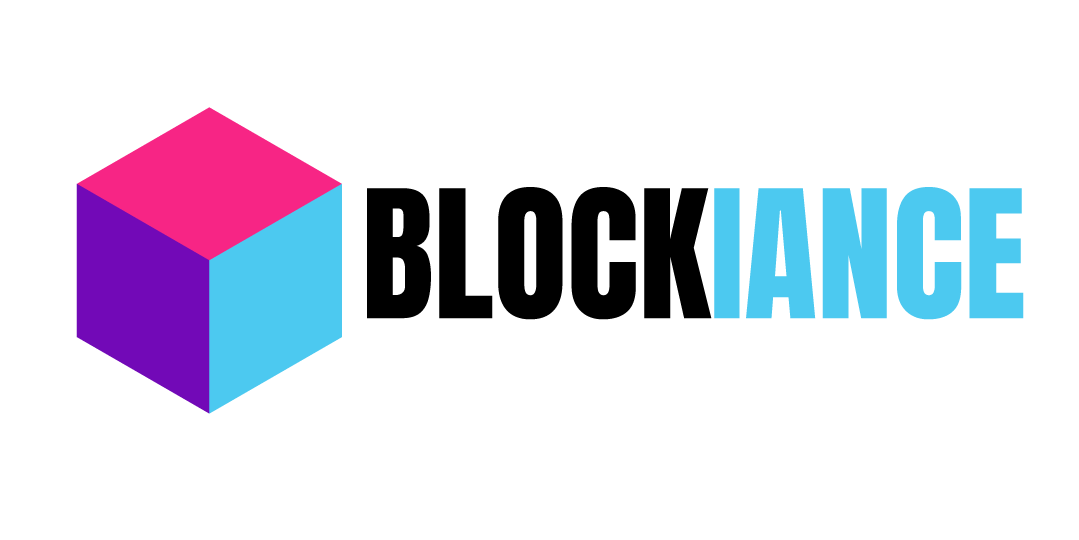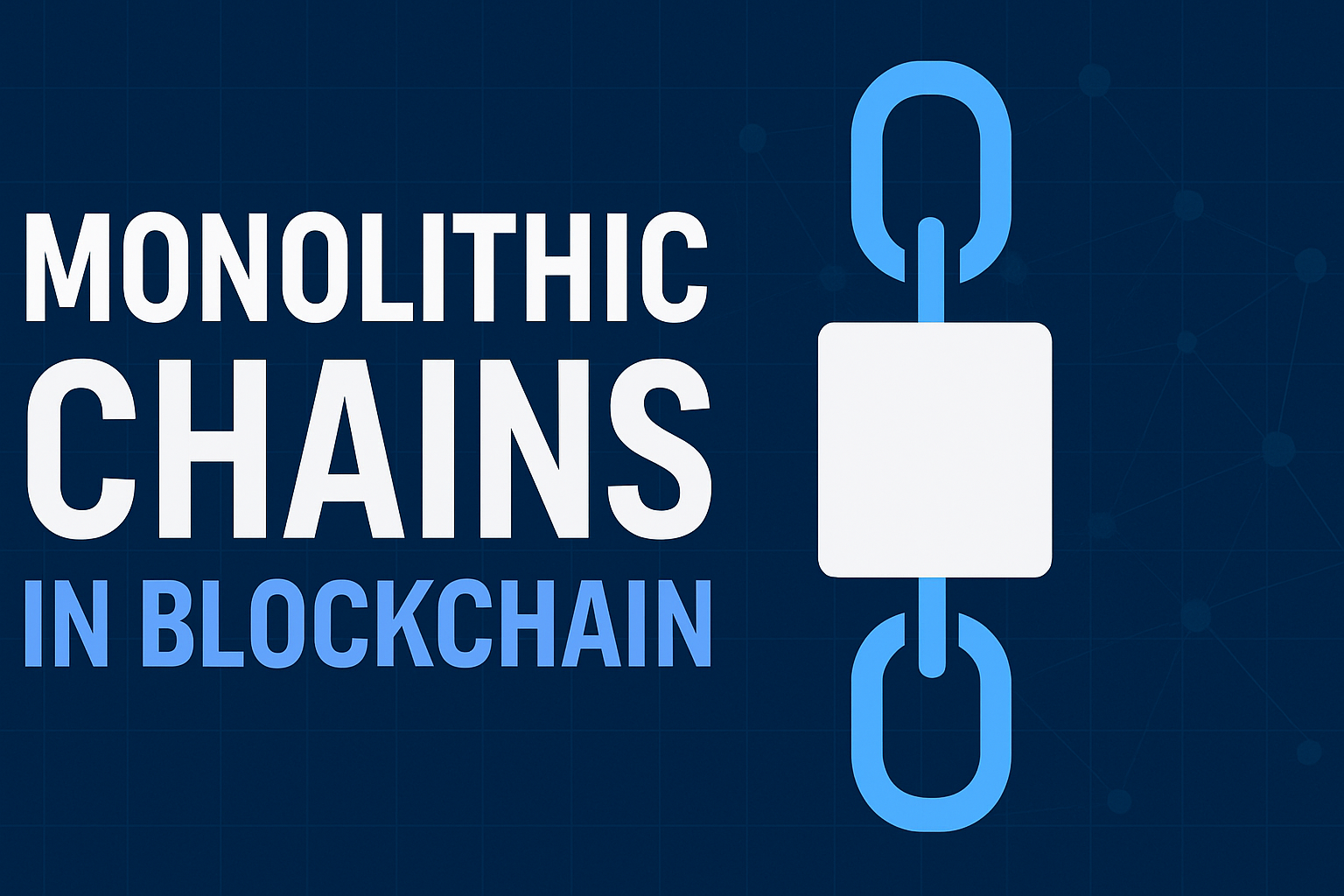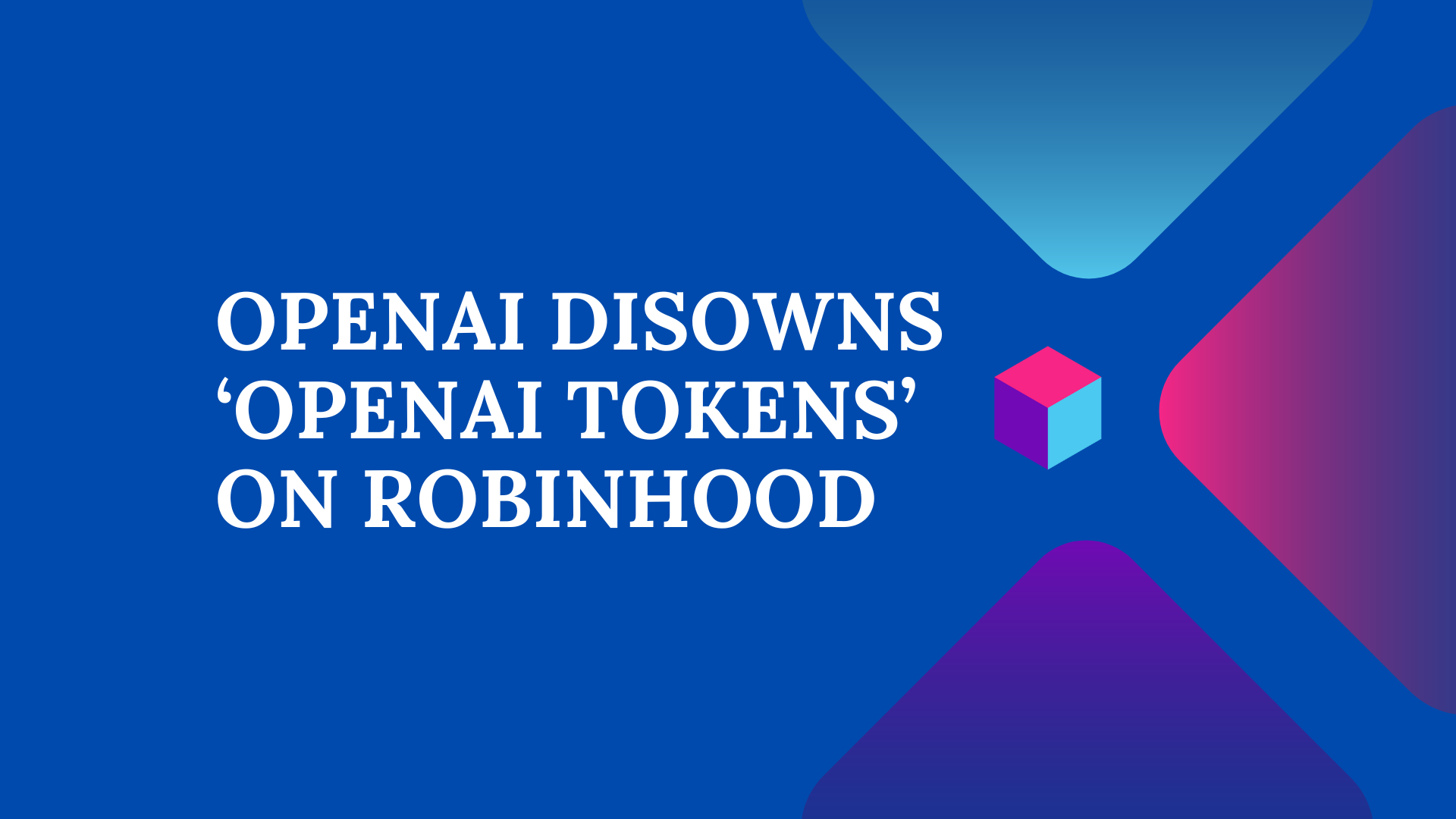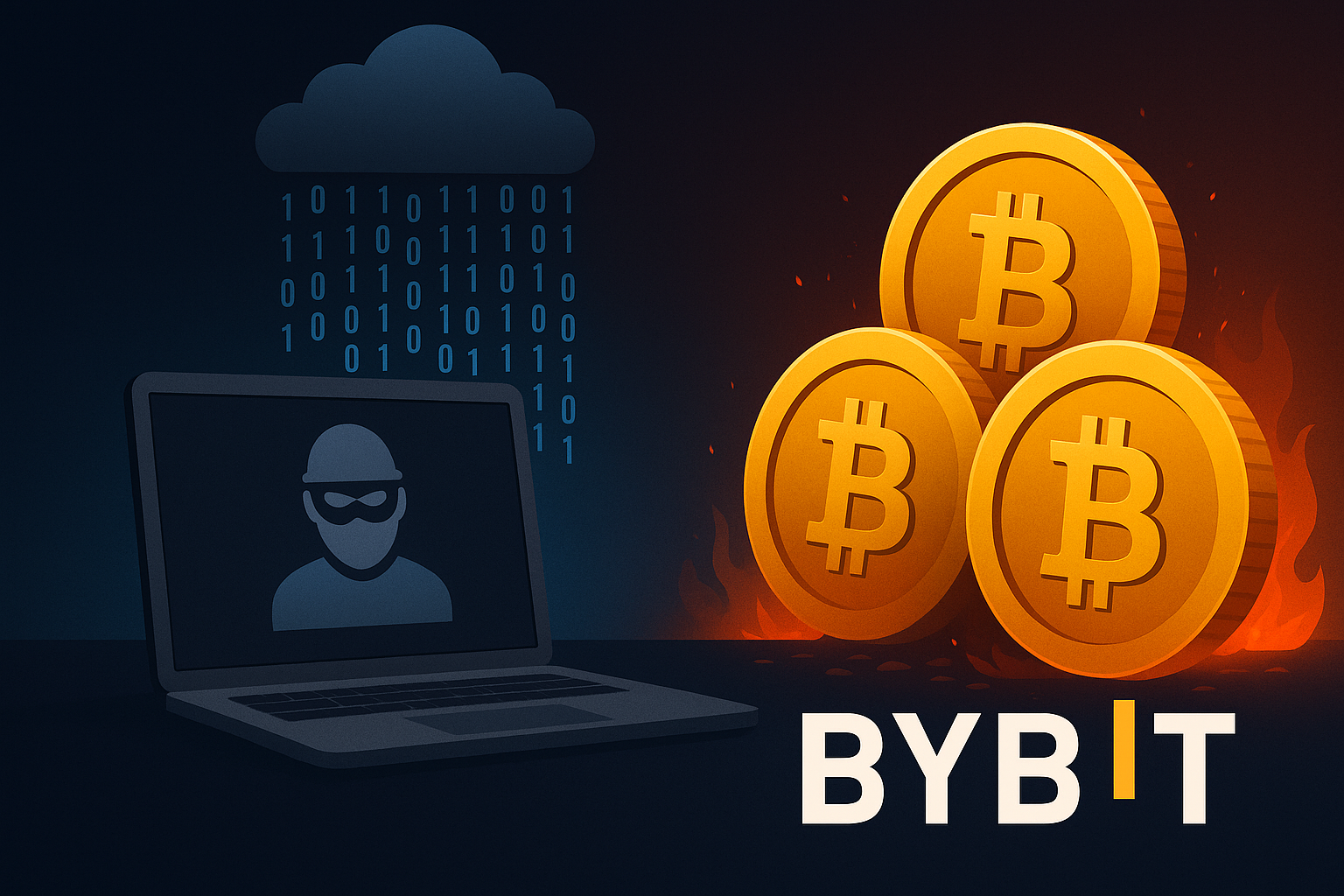Monolithic Chains vs Modular Chains in Blockchain: Comparison, Use Cases, and Future Outlook
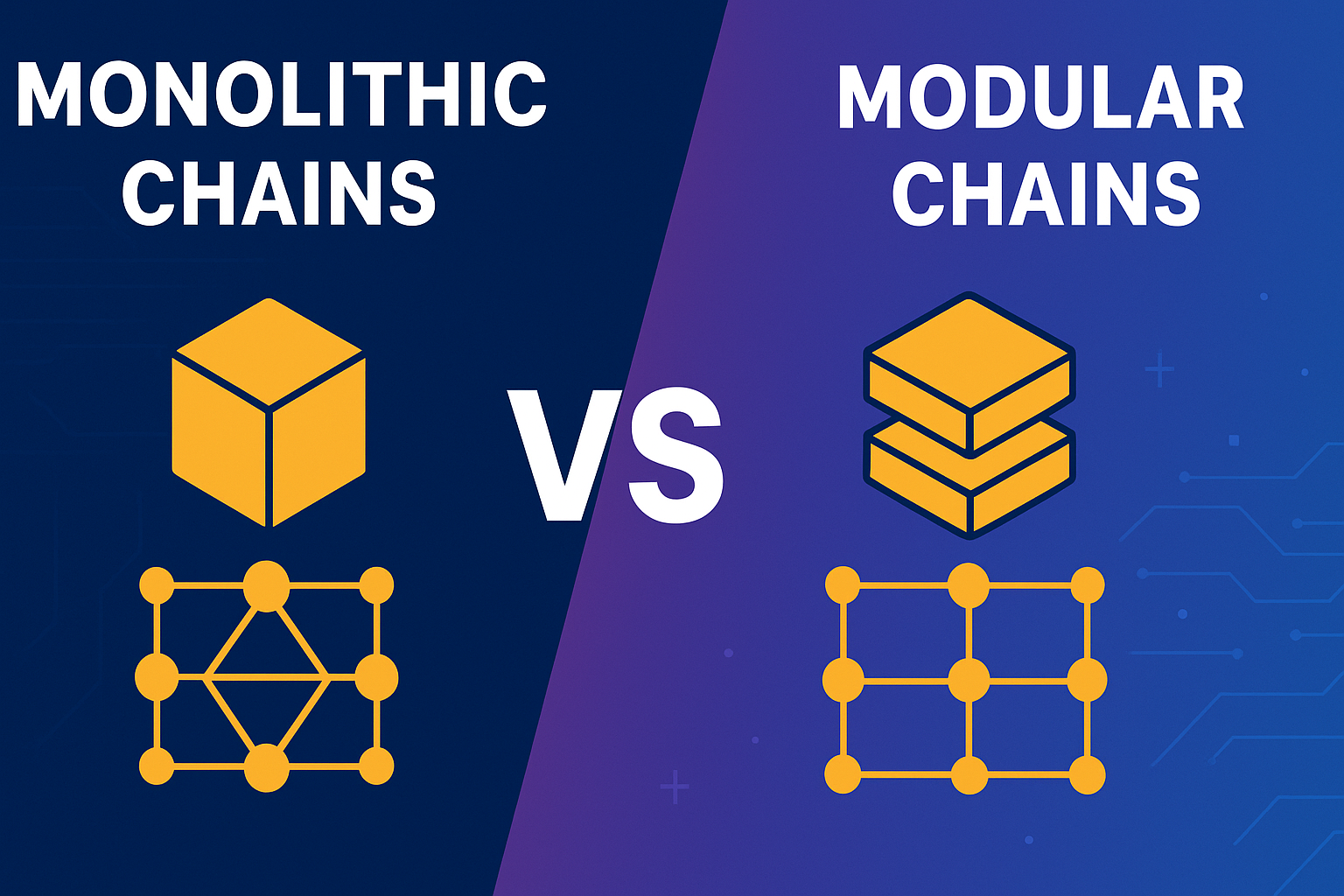
Blockchain technology has emerged as one of the most revolutionary innovations in the last decade. It enables decentralized and trustless systems that can operate without intermediaries. However, as blockchain adoption expands into areas like decentralized finance (DeFi), non-fungible tokens (NFTs), supply chain management, and enterprise solutions, the fundamental challenge remains how to design scalable, secure, and decentralized systems. The two major architectural approaches in this domain are monolithic chains and modular chains.
Monolithic chains represent the original and traditional design where all core blockchain functions are handled in a single unified layer. On the other hand, modular chains represent the next evolution where different blockchain tasks are handled by specialized layers to enhance performance and flexibility. Understanding the differences between these two approaches is crucial for developers, businesses, and enthusiasts aiming to choose the right solution for their use case.
This guide explores monolithic and modular chains in depth. We will cover their architecture, working principles, real-world examples, benefits, limitations, future outlook, and frequently asked questions.
Contents
- 1 What is a Monolithic Chain?
- 2 What is a Modular Chain?
- 3 Detailed Comparison: Monolithic vs Modular
- 4 Advantages of Monolithic Chains
- 5 Limitations of Monolithic Chains
- 6 Advantages of Modular Chains
- 7 Limitations of Modular Chains
- 8 Real-World Use Cases
- 9 Future of Monolithic and Modular Chains
- 10 Frequently Asked Questions (FAQs)
- 10.1 What is the primary difference between monolithic and modular blockchains?
- 10.2 Are modular blockchains more scalable?
- 10.3 Is Bitcoin a modular or monolithic chain?
- 10.4 Why are modular chains cheaper?
- 10.5 Will monolithic chains disappear in the future?
- 10.6 What are rollups?
- 10.7 How do modular chains affect decentralization?
- 10.8 Can monolithic chains implement modular features?
- 11 Conclusion
What is a Monolithic Chain?
A monolithic blockchain is designed to execute all essential blockchain functions on a single layer. These functions include execution, consensus, and data availability. The monolithic design embodies simplicity and security by integrating all responsibilities within one chain.
Core Components of Monolithic Chains
Execution
The execution layer in monolithic chains is responsible for processing transactions and running smart contracts. Every transaction submitted to the network is executed by each full node. This ensures consistency and enables smart contract interactions in a straightforward manner. The execution layer operates using a deterministic virtual machine, such as the Ethereum Virtual Machine (EVM), which provides a consistent environment for smart contract execution across all nodes.
Consensus
Consensus refers to the mechanism by which the network agrees on the state of the blockchain. Bitcoin employs Proof of Work (PoW), where miners solve cryptographic puzzles to validate transactions. Ethereum has moved from PoW to Proof of Stake (PoS), improving energy efficiency but keeping consensus on the main chain. Consensus algorithms are fundamental to maintaining the security and integrity of the blockchain, preventing double-spending and ensuring agreement on the ledger’s state without relying on a central authority.
Data Availability
Data availability means that all transaction data is stored on-chain. Every node in the network holds the entire ledger, enabling complete transparency and the ability to independently verify any part of the blockchain history. This full replication of data promotes decentralization but requires significant storage and bandwidth, especially as the blockchain grows over time. Techniques such as pruning and snapshotting are sometimes used to manage storage overhead, but the fundamental principle remains that the complete transaction history is accessible to all nodes.
Examples of Monolithic Chains
- Bitcoin: Focuses purely on peer-to-peer value transfer using PoW consensus. Bitcoin’s primary strength lies in its security and simplicity, making it the most trusted digital asset for value transfer globally. Its scripting language is limited, making it unsuitable for complex smart contracts but excellent for secure value transfers.
- Ethereum 1.0: Initially operated as a monolithic chain, executing smart contracts and storing data all in one layer. Ethereum 1.0 laid the foundation for decentralized applications (dApps) by introducing a fully programmable blockchain. However, its monolithic structure led to congestion, high gas fees, and performance bottlenecks as adoption increased.
- Solana: A high-throughput blockchain that integrates consensus, execution, and data availability into a single monolithic structure using Proof of History combined with PoS. Solana achieves remarkable transaction speeds by employing parallel processing and a unique timestamping mechanism but faces concerns regarding decentralization due to high hardware requirements.
What is a Modular Chain?
Modular chains separate the blockchain into specialized layers. Each layer focuses exclusively on a specific function, enabling higher scalability and better performance through separation of concerns.
Core Layers in Modular Chains
Execution Layer
The execution layer handles the processing of transactions and smart contract logic. Unlike monolithic chains, modular systems offload this function to specialized execution layers such as Rollups. Rollups process transactions off-chain and periodically post compressed data to the consensus layer, significantly reducing on-chain congestion while maintaining security and data availability guarantees.
Consensus Layer
The consensus layer is responsible for finalizing the order of transactions. It operates independently and does not directly execute transactions but ensures they are properly sequenced and agreed upon. This layer often uses PoS or other efficient consensus mechanisms to maintain network security. By separating consensus, the system can focus on optimizing this function without being burdened by execution or storage tasks.
Data Availability Layer
The data availability layer stores transaction data and guarantees that the data necessary to reconstruct the blockchain state is available. Celestia is a notable example providing a scalable data availability layer. By isolating data availability, this approach prevents data withholding attacks and allows specialized solutions to optimize data storage and retrieval without impacting execution or consensus.
Examples of Modular Chains
- Celestia: Focuses solely on data availability and consensus, allowing any execution environment to plug into it. Celestia enables multiple independent execution layers to use its data availability and consensus without having to build their own.
- Ethereum with Rollups (Arbitrum, Optimism): Offloads transaction execution to layer-2 solutions, while relying on Ethereum for data availability and consensus. Rollups can significantly increase transaction throughput and reduce costs by batching transactions and leveraging Ethereum’s security guarantees.
- Cosmos: Allows independent blockchains (Zones) to interoperate using the Cosmos Hub for shared security and interoperability. Each Zone maintains its own execution and consensus but can connect to others via the Inter-Blockchain Communication (IBC) protocol, enabling a modular and interconnected ecosystem.
Detailed Comparison: Monolithic vs Modular
| Feature | Monolithic Chains | Modular Chains |
|---|---|---|
| Architecture | All-in-one single layer | Specialized layers |
| Examples | Bitcoin, Ethereum 1.0, Solana | Celestia, Arbitrum, Cosmos |
| Scalability | Limited by block size | High scalability through off-chain execution |
| Flexibility | Hard to customize | Highly customizable |
| Security | Strong native security | Shared security across layers |
| Decentralization | High, but high resource needs | Varies by layer |
| Composability | Seamless on-chain interactions | Cross-layer bridges needed |
| Transaction Costs | High during congestion | Lower due to off-chain execution |
| Development Complexity | Simpler but harder to scale | Complex architecture, modular development |
Advantages of Monolithic Chains
Simplicity and Reliability
Monolithic chains are easier to understand and maintain due to their unified architecture. Developers do not have to manage inter-layer communication. This makes auditing and monitoring more straightforward. The predictable nature of monolithic systems allows for straightforward debugging and simpler upgrade paths, as all components reside within a single environment.
Strong Security Guarantees
All functions occur on the same chain, making it easier to reason about and maintain strong security assumptions. There are fewer attack vectors related to cross-layer exploits. The unified structure provides inherent protection against data withholding and replay attacks since every node verifies and executes transactions.
Network Effects and Adoption
Popular monolithic chains such as Bitcoin and Ethereum enjoy significant network effects. Developers and users are drawn to platforms with a large user base and established trust. These chains benefit from extensive community support, well-developed tooling, and a vast ecosystem of applications and services.
Seamless Composability
Smart contracts and applications can interact seamlessly since they share the same execution and storage layer, reducing complexity for developers. This direct interaction allows for rich, interdependent ecosystems where DeFi protocols, NFTs, and DAOs can interoperate smoothly.
Limitations of Monolithic Chains
Scalability Bottlenecks
All transactions are processed by every node, creating a scalability ceiling. As transaction volume increases, throughput slows down. Even with efforts like increasing block size or optimizing consensus algorithms, the fundamental bottleneck remains due to the need for all nodes to process all data.
High Transaction Costs
Congestion leads to high fees. Users compete to include their transactions in blocks, especially during peak usage periods. This economic pressure can price out smaller users or limit application use cases to those with high-value transactions.
Resource Intensive
Nodes require significant storage, bandwidth, and processing power to store and validate the full chain history. This risks centralization where only large players run full nodes. Over time, the ever-growing ledger size increases the barrier to entry for running a full node, diminishing decentralization.
Slower Innovation
Changing one aspect of a monolithic chain requires updating the entire system, which slows down the rate of innovation and upgrades. Protocol changes often require hard forks, which carry coordination risks and can fragment the community.
Advantages of Modular Chains
Scalability
Modular chains enable horizontal scaling. Specialized execution layers can process transactions independently and submit summaries to the consensus layer. This decoupling increases throughput and enables many parallel execution environments, thereby preventing the bottlenecks seen in monolithic systems.
Lower Transaction Costs
By moving execution off-chain or to dedicated layers, modular chains reduce congestion on the consensus layer, resulting in cheaper transactions. These cost savings make blockchain applications accessible to a wider range of users and use cases.
Flexibility and Modularity
Developers can choose or build custom execution environments tailored to specific application needs. Data availability can be optimized separately to meet storage and retrieval demands. Modular chains allow for experimentation with different consensus algorithms or execution environments without affecting the whole system.
Rapid Innovation
Modular chains encourage rapid experimentation. New execution environments or data layers can be deployed independently without disrupting the core consensus mechanism. This accelerates the pace of innovation and enables specialized solutions for different industry needs.
Limitations of Modular Chains
Increased Complexity
Modular architectures require careful design to ensure the correct communication and interaction between layers. Protocols for bridging data between execution and consensus layers need to be secure and efficient, adding significant engineering challenges.
Security Dependencies
Security relies on the integrity of multiple layers. If the execution layer or data availability layer is compromised, it can affect the whole system. Each layer must be robustly secured and maintained independently. For example, a vulnerability in a rollup’s execution environment could lead to incorrect state transitions or loss of funds, even if the consensus and data availability layers remain secure.
Composability Challenges
Applications may need bridges or other solutions to interact across different layers, potentially introducing friction and new attack vectors. This can limit the seamless integration of decentralized applications compared to monolithic chains, where all applications naturally share the same base layer.
Real-World Use Cases
| Use Case | Monolithic Chain Example | Modular Chain Example |
|---|---|---|
| Peer-to-Peer Payments | Bitcoin | N/A (less relevant) |
| Decentralized Finance (DeFi) | Ethereum 1.0 | Ethereum + Arbitrum Rollup |
| High-Performance Gaming | Solana | Polygon + Celestia |
| Enterprise Supply Chain | Hyperledger Fabric | Celestia + Rollups |
| NFT Marketplaces | Ethereum 1.0 | Ethereum + Optimism Rollup |
| Identity Management | Monolithic Private Chains | Modular Chains with Dedicated Identity Layers |
Future of Monolithic and Modular Chains
Monolithic Chains
Monolithic chains will continue to serve as secure settlement layers. Innovations like sharding and parallel execution will enhance their scalability without fully modularizing them. Ethereum’s move towards sharding represents a hybrid approach, enhancing scalability while preserving a monolithic trust model. Bitcoin remains committed to simplicity and security, resisting the modular trend to maintain its role as digital gold.
Modular Chains
As modular designs mature, they will increasingly dominate application-layer blockchains. Developers will favor modular architectures for complex applications requiring high throughput and low costs. Celestia, for example, is pioneering modular blockchain design by allowing diverse execution environments to rely on its data availability and consensus layer, encouraging a vibrant ecosystem of customizable solutions.
Hybrid Models
Many blockchains will adopt hybrid models. Ethereum is already moving toward a modular structure by supporting rollups for execution and retaining the base consensus layer for finality. This approach balances the benefits of monolithic security with the scalability of modular systems, offering a practical path forward for large-scale blockchain ecosystems.
Frequently Asked Questions (FAQs)
What is the primary difference between monolithic and modular blockchains?
Monolithic blockchains handle execution, consensus, and data availability in one layer, whereas modular blockchains separate these into specialized layers.
Are modular blockchains more scalable?
Yes. Modular chains are designed for scalability by offloading execution and optimizing data availability independently, allowing multiple execution environments to operate in parallel.
Is Bitcoin a modular or monolithic chain?
Bitcoin is a monolithic blockchain focused on secure and decentralized value transfer. It does not employ modular architecture.
Why are modular chains cheaper?
Because execution happens off-chain or in dedicated layers, reducing congestion and lowering transaction fees, especially during high usage periods.
Will monolithic chains disappear in the future?
No. Monolithic chains will remain critical as secure settlement layers while modular chains handle complex applications. Both will coexist, serving different use cases.
What are rollups?
Rollups are layer-2 solutions that process transactions off-chain and post the data or state summaries to the layer-1 chain, improving scalability and reducing costs while relying on the security of the base layer.
How do modular chains affect decentralization?
Modular chains can improve decentralization by lowering the barrier for running execution nodes, but the complexity of cross-layer interactions may introduce centralization risks if poorly designed.
Can monolithic chains implement modular features?
To some extent, yes. For example, Ethereum is integrating rollups to handle execution in a modular manner while maintaining a strong consensus layer.
Conclusion
Both monolithic and modular chains play crucial roles in the blockchain ecosystem. Monolithic chains provide strong security, simplicity, and serve as settlement layers trusted globally. Modular chains offer flexibility, scalability, and innovation potential for complex applications.
The future of blockchain lies in a coexistence where each approach is used where it fits best. Monolithic chains will remain anchors of security and trust, while modular chains drive scalability and application-level innovation. Together, they form a balanced, resilient ecosystem.
This guide offers a thorough understanding of both architectures and empowers readers to make informed decisions in blockchain development or investment.
By continually evolving and adopting hybrid models, the blockchain industry aims to overcome the limitations of monolithic and modular chains, creating a robust, efficient, and secure environment for the decentralized applications of tomorrow.

Edward is a technology journalist at Blockiance who focuses on the intersection of AI and blockchain. With a degree in artificial intelligence, he excels at explaining complex innovations to a broad audience. Edward’s forward-thinking reporting has earned him a growing readership in the tech community.
